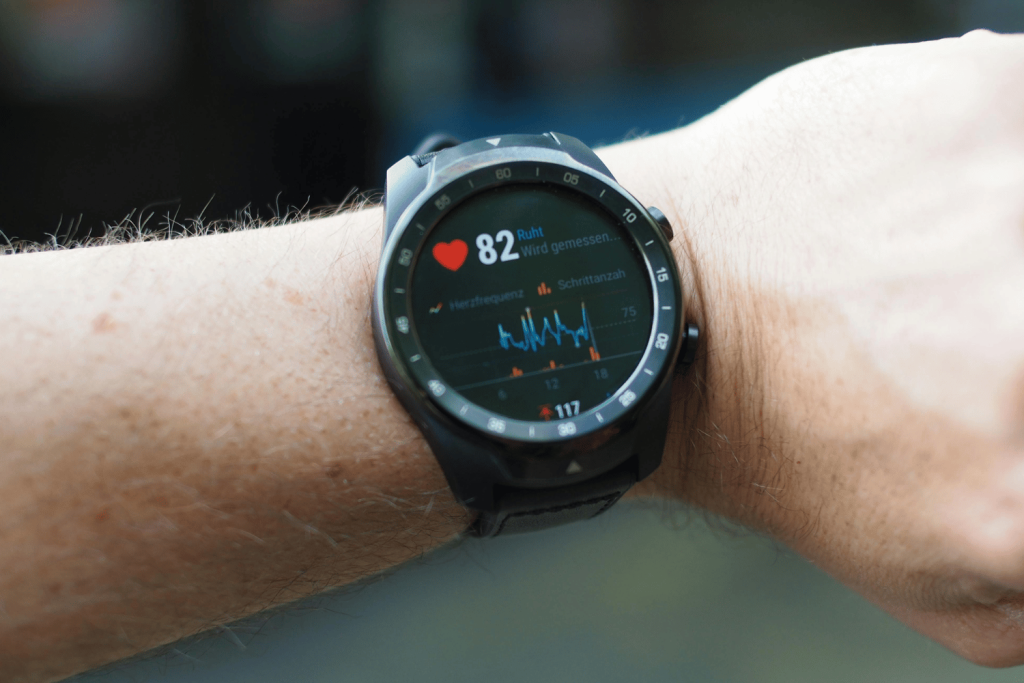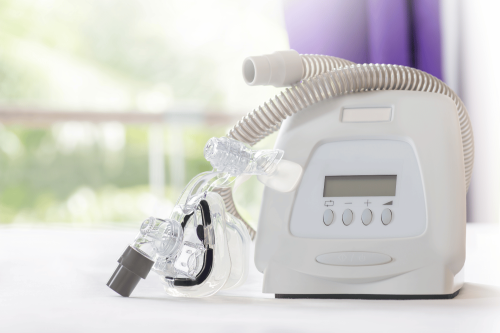
Heart rate is a vital indicator of cardiovascular health, reflecting how efficiently your heart pumps blood throughout your body. According to health studies, understanding your heart rate and its variations across different age groups can help you monitor your fitness levels, detect potential health issues, and make informed decisions about your well-being. Whether you're a fitness enthusiast, a caregiver, or simply health-conscious, this guide will demystify heart rate charts by age, explain what the numbers mean, and provide actionable tips for maintaining a healthy heart rate. Use this resource to deepen your knowledge, guide your actions, or support those in your care with data-driven insights to promote a healthier life.
What Is Heart Rate?
Heart rate refers to the number of times your heart beats per minute (bpm). It plays a crucial role in delivering oxygen and nutrients to the body’s organs and tissues. Your heart rate can vary depending on factors such as age, activity level, and overall health.
Monitoring your heart rate is essential for understanding your cardiovascular health. A heart rate within the normal range signifies that your heart is functioning efficiently, while significant deviations could indicate potential health concerns. By regularly tracking your heart rate, you can detect irregularities early and make informed decisions about your overall well-being.

What Is Tachycardia?
What Is Tachycardia?
Tachycardia is a condition where the heart beats faster than usual, typically exceeding 100 beats per minute (bpm) at rest. This elevated heart rate can result from several factors, including stress, exercise, illness, or an underlying medical condition.
When the heart beats too quickly, it may not pump blood effectively to the rest of the body, leading to symptoms such as shortness of breath, chest pain, dizziness, or even fainting. Like hypertension, tachycardia can pose serious health risks if untreated, such as an increased likelihood of stroke, heart failure, or sudden cardiac arrest.
There are two common types of tachycardia, based on their origin in the heart:
- Supraventricular Tachycardia (SVT): This type occurs in the upper chambers (atria) of the heart and often presents with a rapid but regular rhythm.
- Ventricular Tachycardia (VT): This type originates in the lower chambers (ventricles) and can be life-threatening if sustained for an extended period.
A normal resting heart rate typically ranges from 60 to 100 bpm. If your heart rate consistently exceeds this range without an apparent cause, it is essential to consult a physician. Early detection and appropriate treatments can help manage tachycardia effectively and prevent its progression to severe complications.
What Is Bradycardia?
When the heart beats significantly slower than usual, it is called bradycardia. Typically, bradycardia is defined as a resting heart rate below 60 beats per minute (bpm). While it can be a sign of excellent physical fitness in well-conditioned athletes, it could also indicate an underlying medical condition that requires attention. Some individuals with bradycardia may not experience any symptoms, while others may report fatigue, dizziness, or fainting.
The true prevalence of bradycardia is challenging to determine, as it can occur without noticeable symptoms. However, it is most commonly observed in older adults or as a result of certain medical conditions, such as hypothyroidism or problems with the heart's electrical system. People of all ages and backgrounds may experience bradycardia, but symptoms are more likely to appear in older individuals or those with preexisting health issues.
Here is a bradycardia heart rate chart below:
|
Age Group |
Resting Heart Rate (bpm) |
|---|---|
|
Newborn to 1 month |
< 90 bpm |
|
One to 12 months |
< 80 bpm |
|
Young child (1–5 years) |
< 70 bpm |
|
Adolescent (14–18 years) |
< 60 bpm |
|
Adult (19–40 years) |
< 60 bpm |
|
Adult (41–60 years) |
< 55 bpm |
|
Older adults (61 and older) |
< 50 bpm |
Influence of Heart Rate with Age
Heart rate naturally changes with age due to physiological factors, such as the heart's ability to pump blood and the elasticity of blood vessels. Numerous studies have examined the relationship between aging and changes in resting heart rate over time. While a higher resting heart rate is generally associated with stress or illness, a lower heart rate can indicate strong cardiovascular health but may also signal potential health concerns, particularly in older individuals.
During childhood and adolescence, heart rate decreases as the cardiovascular system matures and the heart becomes more efficient at pumping blood—this developmental process results in a gradual reduction in resting heart rate with age. However, heart rate variability becomes more critical to monitor in adulthood and later life, where factors such as lifestyle, medication use, and chronic conditions often come into play.
Researchers have developed heart rate charts to illustrate normative resting heart rate ranges by age group. These charts resemble the physiological changes associated with aging, offering a valuable reference for healthcare professionals and individuals to monitor cardiovascular health throughout the lifespan. Tracking heart rate changes aligned with age helps detect potential health risks early and promotes proactive management.
Heart Rate Chart
Heart rate varies by age and activity level. Monitoring heart rate changes is essential for understanding overall cardiovascular health and identifying potential issues early. Below is a chart showing normal resting heart rates for different age groups:
|
Age Group |
Resting Heart Rate (bpm) |
|---|---|
|
Newborn to 1 month |
90–180 bpm |
|
1 to 12 months |
80–160 bpm |
|
Young child (1–5 years) |
70–120 bpm |
|
Adolescent (14–18 years) |
60–100 bpm |
|
Adult (19–40 years) |
60–100 bpm |
|
Middle-aged adult (41–60 years) |
55–95 bpm |
|
Older adults (61 and older) |
50–90 bpm |
Below are some additional insights into resting heart rates across various age groups:
Infants and Young Children (Newborn to 5 years): Infants and young children naturally have higher resting heart rates compared to adults. Their cardiovascular system constantly adapts as they grow, requiring more frequent heartbeats to distribute oxygen and nutrients effectively.
Adolescents (14–18 years): During adolescence, resting heart rates tend to align with those of adults as the body matures and cardiovascular efficiency improves.
Adults (19+ years): Resting heart rates typically stabilize, though they may vary based on fitness level, overall health, and lifestyle habits. However, older adults may experience slight decreases as part of the natural aging process.
Understanding and regularly tracking heart rate can help individuals maintain a healthy lifestyle and address any abnormalities in partnership with medical professionals.
Potential Risk Factors for Heart Rate by Age
Heart rate can be influenced by a variety of factors, some of which evolve as individuals age. While certain risk factors, such as lifestyle habits, can be modified, others, like genetics, age, and underlying health conditions, cannot. Nonetheless, proactive measures can help mitigate risks associated with abnormal heart rates. The following section explores how heart rate risk varies across age groups.
Adolescents and Young Adults
During adolescence and young adulthood, hormonal fluctuations and physical developments may affect heart rate. Lifestyle factors such as poor diet, lack of exercise, and excessive screen time can lead to imbalances, such as tachycardia (elevated heart rate). Stress and sleep deprivation, which are increasingly common in younger populations, also contribute to irregularities. Establishing healthy habits early, including regular physical activity and stress management, can promote long-term heart health.
Middle-Aged Adults
Middle-aged adults often experience changes in heart rate due to heightened stress, lifestyle pressures, and the body's natural aging. Conditions like obesity, high blood pressure, or diabetes, which are more prevalent in this age group, also increase the likelihood of abnormalities such as arrhythmias. Regular monitoring, dietary adjustments, and consistent exercise are critical for maintaining a healthy heart rate and reducing cardiovascular risks in this population.
Elderly People
Aging is naturally associated with physiological changes in the heart's electrical conduction system, which may lead to conditions such as bradycardia (a slower heart rate) or arrhythmias. Additionally, age-related changes in heart structure and function can compound these issues. For older adults, routine medical check-ups, personalized treatment plans, and adopting heart-healthy practices, such as balanced nutrition and regular physical activity, are essential steps to effectively manage these risks.
Factors That Affect Heart Rate
Studies have shown that numerous factors can influence heart rate, and these factors often interact in complex ways. While some variables are physiological, others are environmental or situational. A few of these factors include age, sex, body position, physical activity, emotional state, medication use, and overall health. Below, some of the primary contributors are discussed in detail:
Heart rate tends to decrease with age due to changes in the cardiovascular system, including a decline in the maximum heart rate achievable during exercise. Newborns typically have higher resting heart rates compared to adults. Males and females exhibit comparable heart rates during childhood; however, adult females tend to have slightly higher resting heart rates than males.
Body position can also affect heart rate, as it tends to increase when moving from a resting state to standing, reflecting the cardiovascular adjustments required to maintain blood flow and blood pressure. Physical activity directly affects heart rate, as exercise increases the body's oxygen demand, causing the heart to beat faster. Within minutes after exercise ceases, the heart rate usually returns to baseline.
Additionally, emotional states such as stress, anxiety, excitement, or fear activate the sympathetic nervous system, leading to an elevated heart rate—the so-called “fight or flight” response. On the contrary, states of relaxation or meditation can slow the heart rate due to parasympathetic activation. Certain medications, such as beta-blockers, may lower heart rate, while stimulants or some disease conditions can cause the heart to beat faster.
Pregnancy also affects heart rate, as the body needs to pump additional blood to support the growing fetus. The resting heart rate generally increases during pregnancy, particularly in the later trimesters, as the cardiovascular system adapts to support both the mother and the baby. Understanding these factors is crucial for managing and maintaining optimal heart health.
Maintaining a Healthy Heart Rate: A Data-Driven Approach to Better Health
Understanding the ideal heart rate by age and its fluctuations is crucial for both personal health management and clinical practice. Monitoring and interpreting heart rate variations enable early detection of potential issues, timely interventions, and improved outcomes over time.
By aligning lifestyle choices and activities with data-driven heart rate targets, individuals can enhance cardiovascular function and reduce the risk of heart-related conditions. Healthcare practitioners can similarly leverage this data to guide personalized care plans and promote sustainable well-being.
FAQ
- What is a normal heart rate for my age? Normal heart rates vary by age, but for adults, a resting heart rate between 60 and 100 bpm is typical.
- What is a dangerously high heart rate? A resting heart rate consistently above 100 bpm (tachycardia) may indicate a health issue and should be evaluated by a doctor.
- Is a low heart rate always a problem? Not necessarily. Athletes often have lower heart rates, but if accompanied by symptoms like dizziness or fatigue, it may require medical attention.
- How can I lower my heart rate naturally? Regular exercise, stress management, and avoiding stimulants like caffeine can help lower your resting heart rate.
- When should I see a doctor about my heart rate? Seek medical advice if your heart rate is consistently too high, too low, or irregular, especially if accompanied by symptoms like chest pain or shortness of breath.








 Login with Google
Login with Google Login with Facebook
Login with Facebook